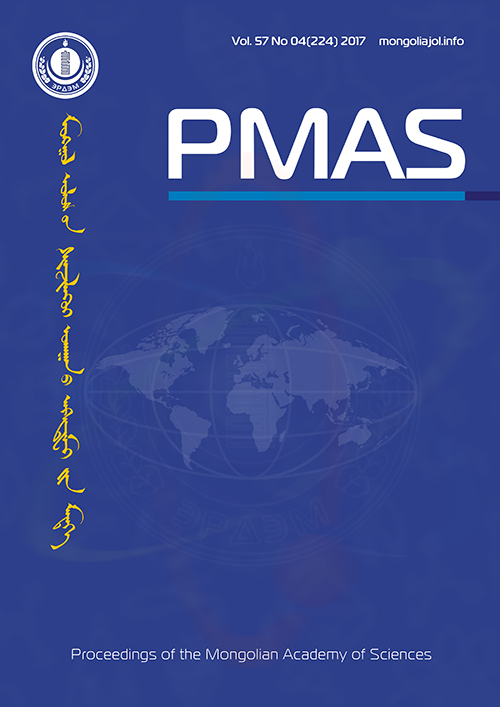LUMINESCENCE DATING OF AN ANCIENT WALLED SETTLEMENT IN ORKHON VALLEY, MONGOLIA
DOI:
https://doi.org/10.5564/pmas.v57i4.918Keywords:
Luminescence, OSL dating, quartz, fast component, Orkhon Valley,Abstract
We investigated the potential of the optically stimulated luminescence (OSL) method to date young (<1000 years) samples collected in the Orkhon Valley Cultural Landscape, Mongolia. Quartz showed an infrared signal; therefore the post-IR OSL method was applied to small aliquots which are considered proxies for single grain measurements. Statistical analysis of the dose distribution produced CAM De of 5.14±0.10 Gy and over dispersion of 47.5%, and MAM De of 3.7±0.6 Gy. Since no partial bleaching was suspected, the analysis of signal composition was done and the fast quartz post-IR OSL lead to De of 4.9±0.2 Gy. Based on the quartz fast component and CAM De we propose the new chronology of ancient construction at 785±80 AD, rather than 906-1125 AD as suggested by archaeological evidence. However, the MAM age is in good agreement with independent age control for construction of the ramparts suggesting the date of reconstruction, collapse or reuse for the square walled enclosure MOR3 during 1090±80AD.Downloads
1920
Downloads
Published
How to Cite
Issue
Section
License
Copyright on any research article in the Proceedings of the Mongolian Academy of Sciences is retained by the author(s).
The authors grant the Proceedings of the Mongolian Academy of Sciences a license to publish the article and identify itself as the original publisher.

Articles in the Proceedings of the Mongolian Academy of Sciences are Open Access articles published under a Creative Commons Attribution 4.0 International License CC BY.
This license permits use, distribution and reproduction in any medium, provided the original work is properly cited.

